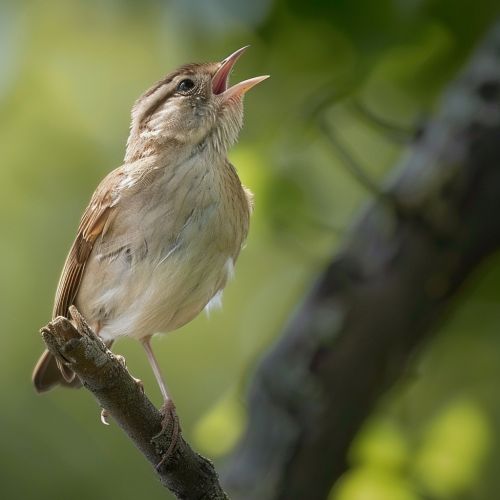Songbird
Overview
Songbirds, also known as passerines, are a large and diverse group of birds belonging to the order Passeriformes. They are characterized by their ability to produce a wide range of sounds, which are often melodious and complex. These sounds, or songs, are used for a variety of purposes, including attracting mates, defending territories, and communicating with other members of the same species. Songbirds are found all over the world and make up nearly half of all bird species.
Anatomy and Physiology
Songbirds are known for their vocal apparatus, the syrinx, which is unique among birds. Located at the base of the trachea, the syrinx is a complex structure that allows songbirds to produce a wide variety of sounds. The muscles surrounding the syrinx can change its shape and tension, altering the pitch, volume, and quality of the sounds produced.


Songbirds also have a specialized brain structure called the song system, which is involved in the production and learning of songs. This system is divided into two main pathways: the motor pathway, which controls the production of song, and the anterior forebrain pathway, which is involved in song learning and improvisation.
Behavior and Communication
Songbirds use their songs for a variety of purposes. The primary function of song is to attract mates and defend territories. Males are typically the ones who sing, although in some species females also produce songs. The complexity and quality of a male's song can indicate his fitness to potential mates.
Song learning in songbirds is a complex process that involves both genetic and environmental factors. Young songbirds learn their songs from adult "tutors", usually their fathers. This learning process involves a period of memorization, during which the young bird listens to and memorizes the tutor's song, followed by a period of practice, during which the young bird gradually refines its own song to match that of the tutor.
Songbirds also use a variety of non-vocal signals to communicate, including visual signals such as body postures and movements, and tactile signals such as pecking and preening.
Diversity and Distribution
Songbirds are incredibly diverse, with over 5,000 species found all over the world. They inhabit a wide range of habitats, from deserts to rainforests, and from the Arctic tundra to tropical islands. Some species are highly specialized, adapted to specific habitats or diets, while others are generalists, able to thrive in a variety of environments.
The diversity of songbirds is reflected in their wide range of sizes, shapes, and colors. They range in size from the tiny goldcrest, which weighs just 5 grams, to the common raven, which can weigh over 1 kilogram. Their plumage can be drab or brightly colored, often with males being more colorful than females.
Conservation
Many songbird species are threatened by habitat loss, climate change, and other human activities. Conservation efforts for songbirds include habitat protection and restoration, captive breeding and reintroduction programs, and education and outreach to raise public awareness about the importance of songbirds and the threats they face.
